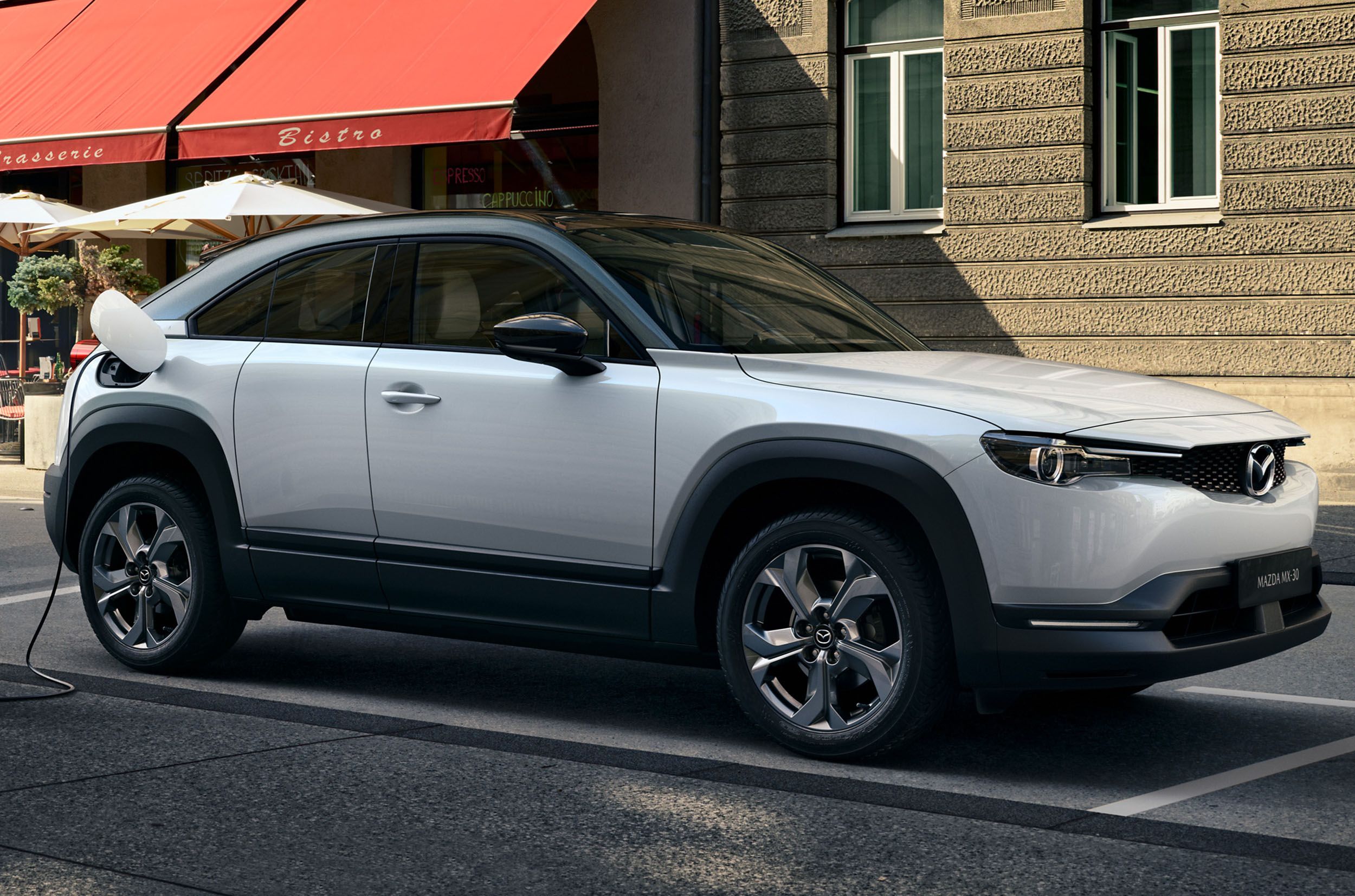Better late than never, Mazda finally entered the electric car market with the MX-30 crossover. US availability hasn't been confirmed, but in Europe the Mazda MX-30 uses a 35.5-kWh lithium-ion battery providing a range of 130 miles on a single charge. Using a 50kW rapid charger, the battery can be charged to 80 percent in around 40 minutes.
Sadly, its paltry range means the Mazda MX-30 would struggle to compete against rivals like the Chevrolet Bolt and Hyundai Kona EV in the US, which both deliver around 258 miles of range. Instead of prioritizing range, Mazda wanted the MX-30 to be as efficient as possible. However, Mazda could still find a way to improve the MX-30's range without increasing the size of the battery.
Tucked away in a release looking back at the company's last 100 years, Mazda has hinted the MX-30 could adopt a rotary engine used as a range extender. A similar setup was used in a prototype Mazda2 EV that had a small single-rotor engine used as a range extender. According to Mazda, "a similar system could find its way onto the Mazda MX-30, a brand new battery electric crossover SUV arriving at dealerships this year."
Developed In 2013, the Mazda 2 EV prototype developed 38 hp and used a 330 cc single-rotor Wankel rotary engine as a range extender.
With this setup, the prototype could deliver an EV range of 236 miles, which would be a welcome improvement over the MX-30.
While the Japanese automaker could finally be reviving its rotary engine for the MX-30, we're still waiting for a new Mazda rotary-powered sports car. Mazda previewed a reborn rotary sports car with the stunning RX-Vision back in 2015, but a production version still hasn't happened. Mazda also hasn't produced a new rotary sports car since the RX-8 ended production in 2012. We're not losing all hope yet, however, as a recent patent filing hinted that Mazda could be developing a successor to the RX-8.

